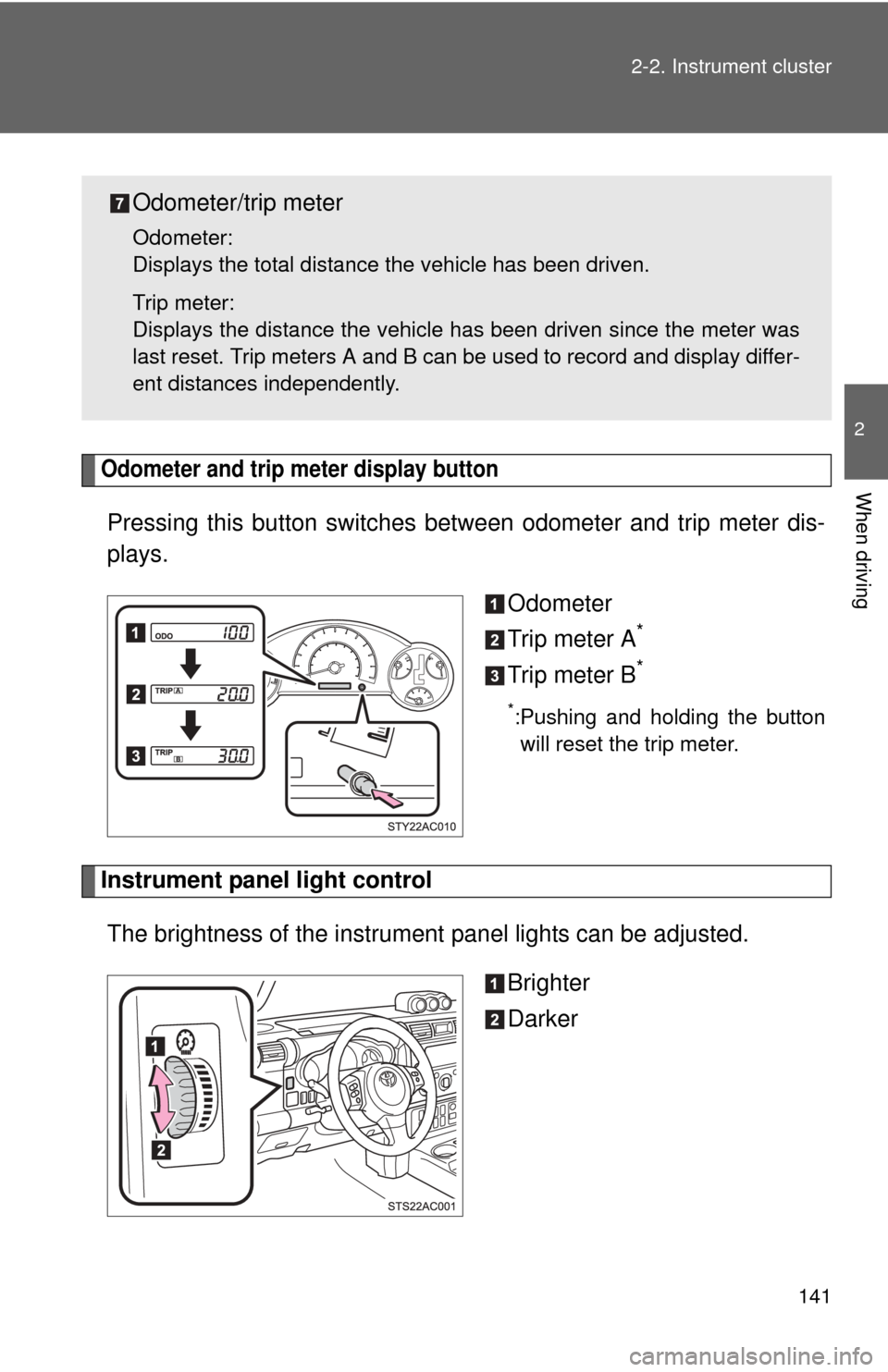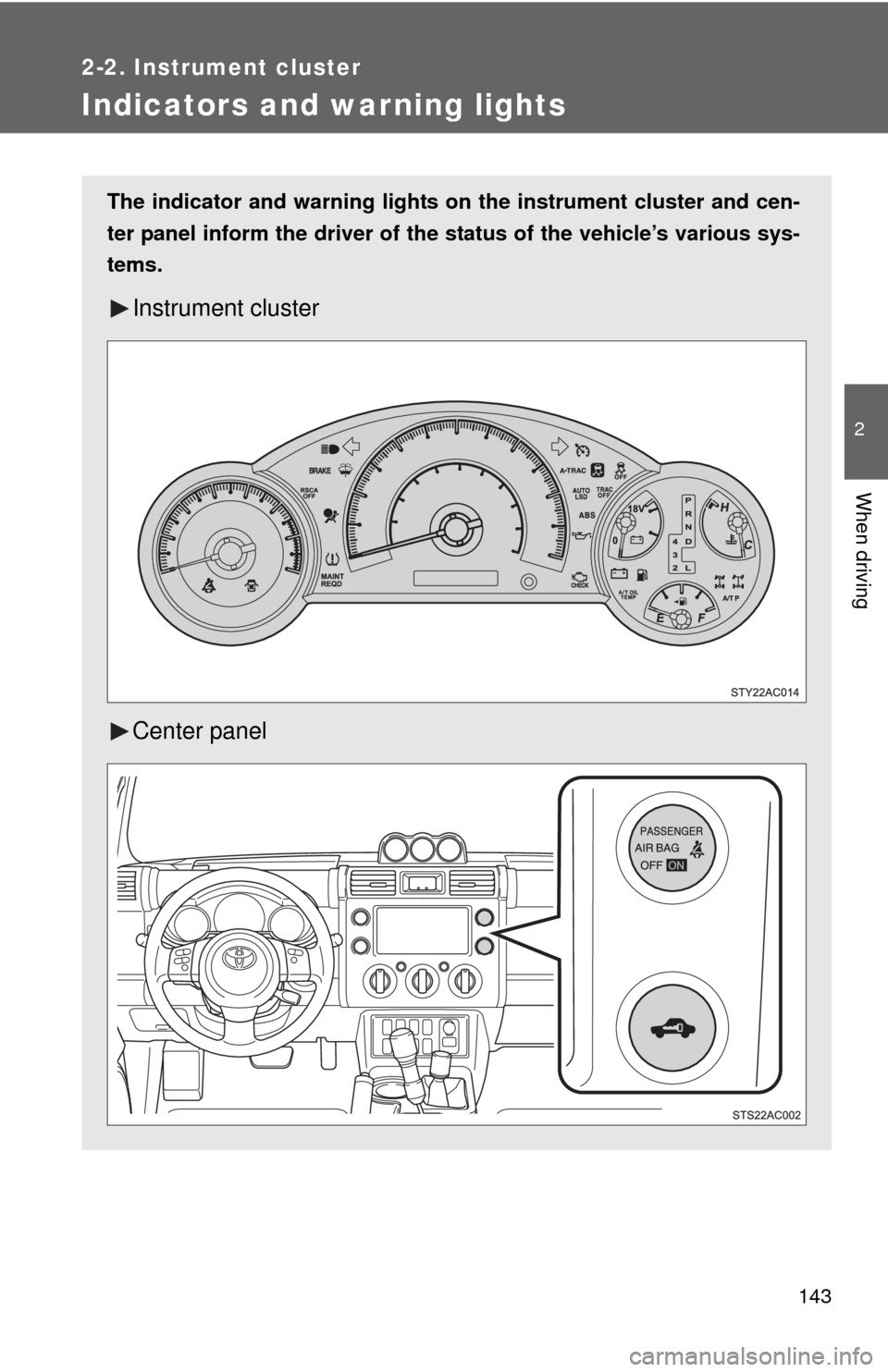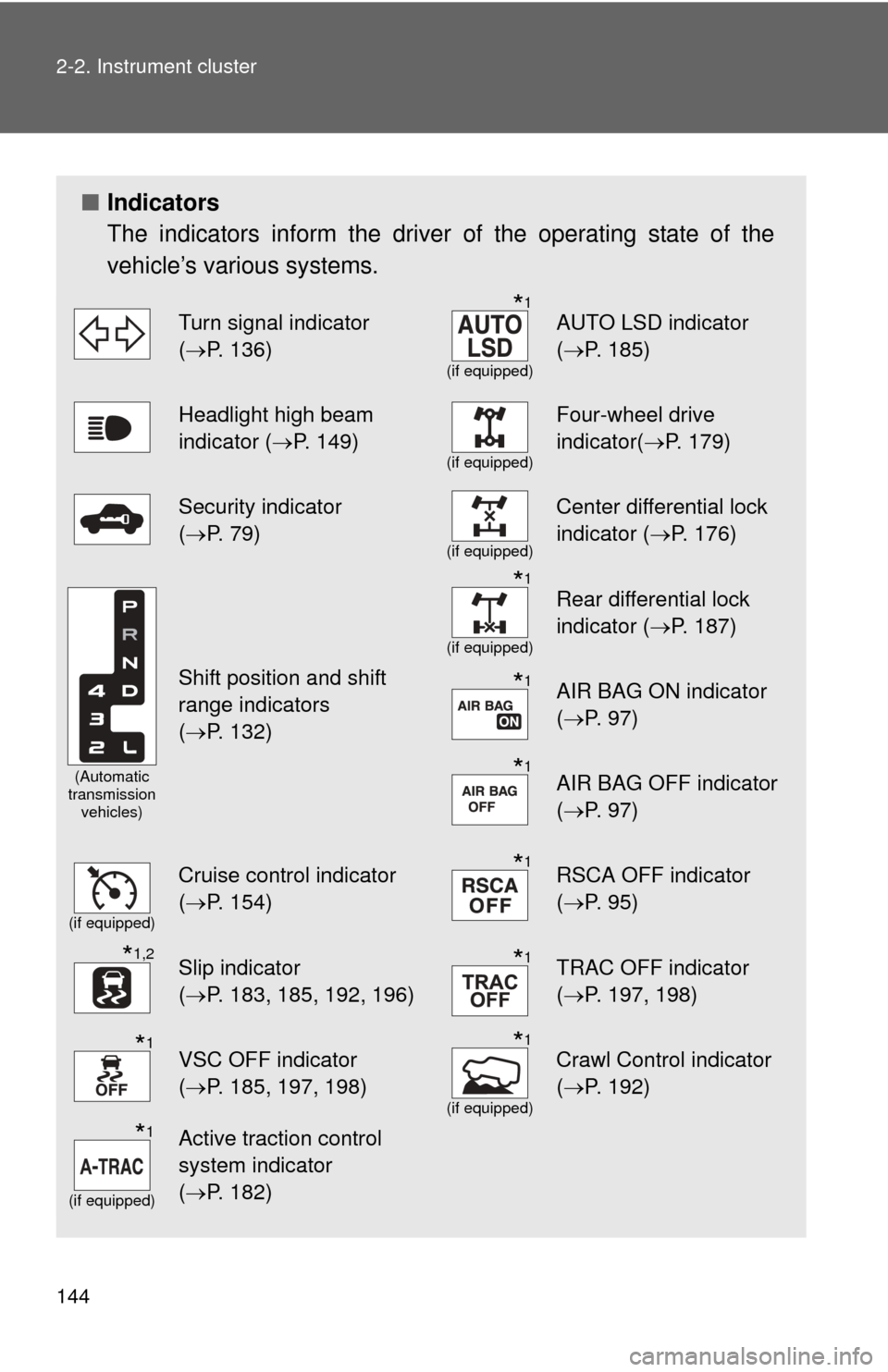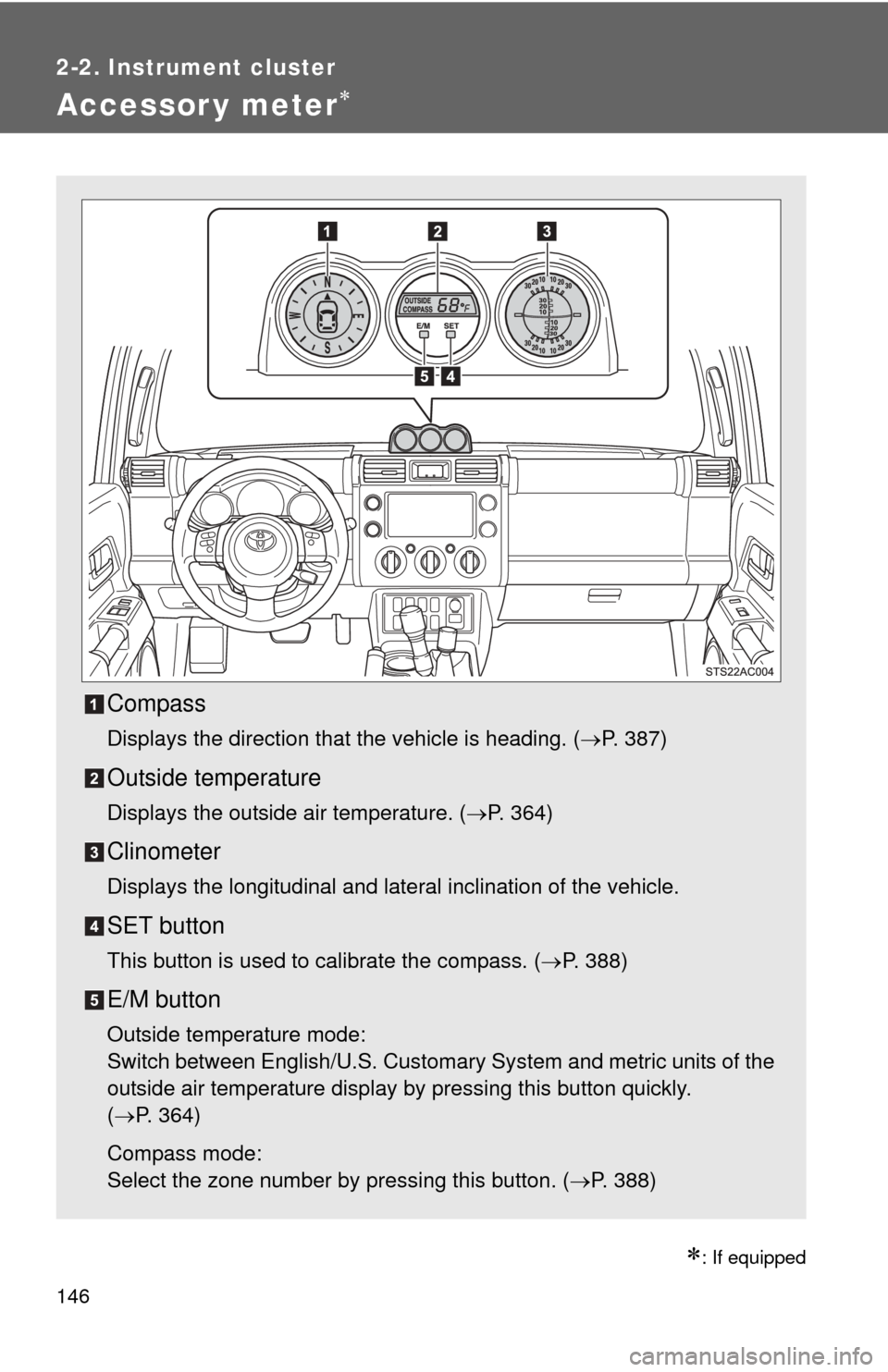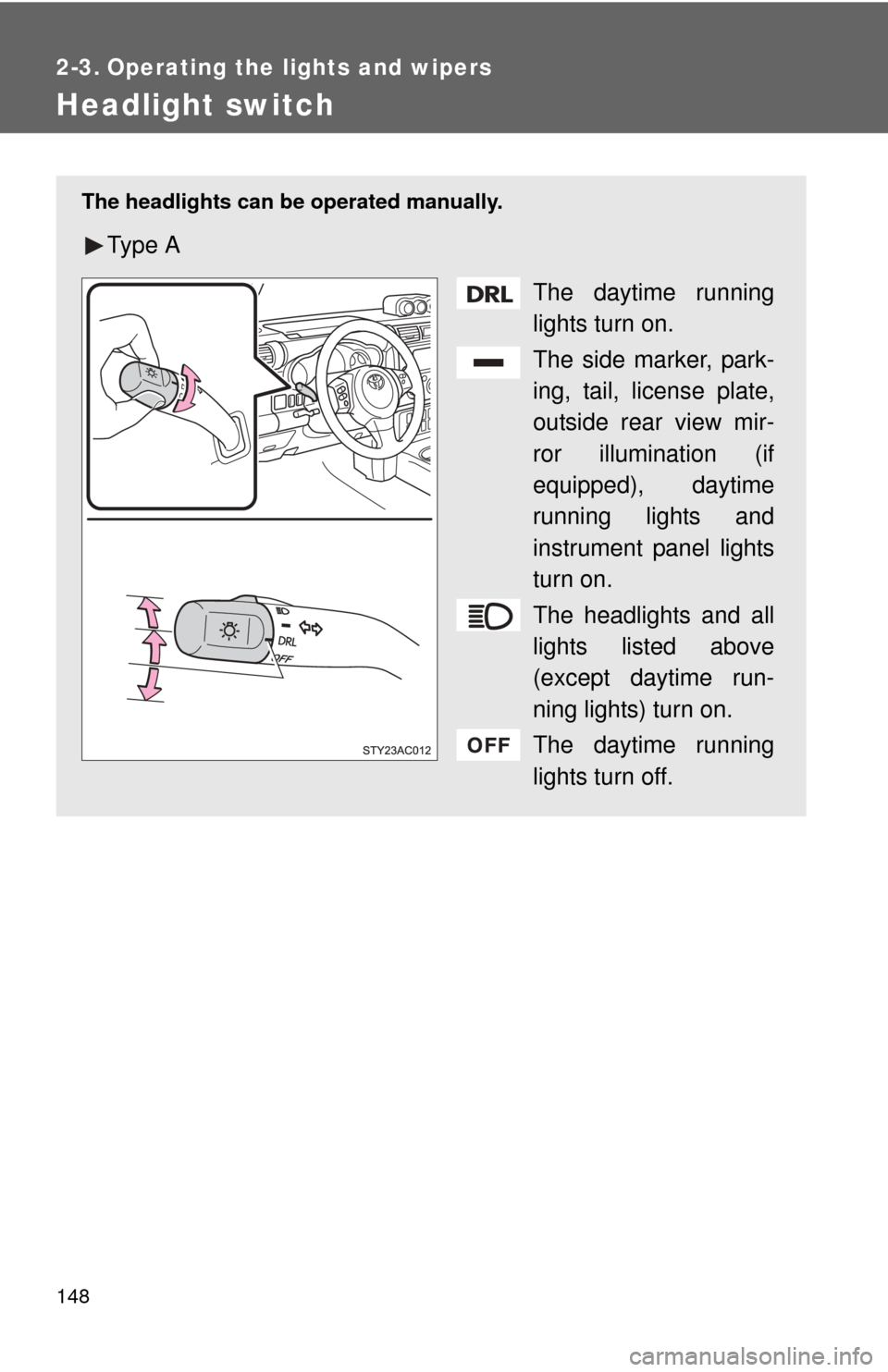TOYOTA FJ CRUISER 2014 1.G Owners Manual
FJ CRUISER 2014 1.G
TOYOTA
TOYOTA
https://www.carmanualsonline.info/img/14/6378/w960_6378-0.png
TOYOTA FJ CRUISER 2014 1.G Owners Manual
Trending: checking oil, deactivate passenger airbag, brake rotor, CD changer, change language, bulb, fuel reserve
Page 141 of 572
141
2-2. Instrument cluster
2
When drivingOdometer and trip meter display button
Pressing this button switches
between odometer and trip meter dis-
plays.
Odometer
Trip meter A
*
Trip meter B*
*:Pushing and holding the buttonwill reset the trip meter.
Instrument panel light control
The brightness of the instrument panel lights can be adjusted.
Brighter
Darker
Odometer/trip meter
Odometer:
Displays the total distance the vehicle has been driven.
Trip meter:
Displays the distance the vehicle has been driven since the meter was
last reset. Trip meters A and B can be used to record and display differ-
ent distances independently.
Page 142 of 572
142 2-2. Instrument cluster
NOTICE
■To prevent damage to the engine and its components
●Do not let the indicator needle of the tachometer enter the red zone, which
indicates the maximum engine speed.
● The engine may be overheating if the temperature gauge is in the red
zone (H). In this case, immediately stop the vehicle in a safe place, and
check the engine after it has cooled completely. (
P. 504)
Page 143 of 572
143
2-2. Instrument cluster
2
When driving
Indicators and warning lights
The indicator and warning lights on the instrument cluster and cen-
ter panel inform the driver of the status of the vehicle’s various sys-
tems.
Instrument cluster
Center panel
Page 144 of 572
144 2-2. Instrument cluster
■Indicators
The indicators inform the driver of the operating state of the
vehicle’s various systems.
Turn signal indicator
(P. 136)*1
(if equipped)
AUTO LSD indicator
( P. 185)
Headlight high beam
indicator ( P. 149)
(if equipped)
Four-wheel drive
indicator(P. 179)
Security indicator
(P. 79)
(if equipped)
Center differential lock
indicator ( P. 176)
(Automatic
transmission vehicles)
Shift position and shift
range indicators
(P. 132)
*1
(if equipped)
Rear differential lock
indicator ( P. 187)
*1AIR BAG ON indicator
(P. 97)
*1AIR BAG OFF indicator
(P. 97)
(if equipped)
Cruise control indicator
(P. 154)*1RSCA OFF indicator
( P. 95)
*1,2Slip indicator
(P. 183, 185, 192, 196)*1TRAC OFF indicator
( P. 197, 198)
*1VSC OFF indicator
(P. 185, 197, 198)*1
(if equipped)
Crawl Control indicator
( P. 192)
*1
(if equipped)
Active traction control
system indicator
(P. 182)
Page 145 of 572
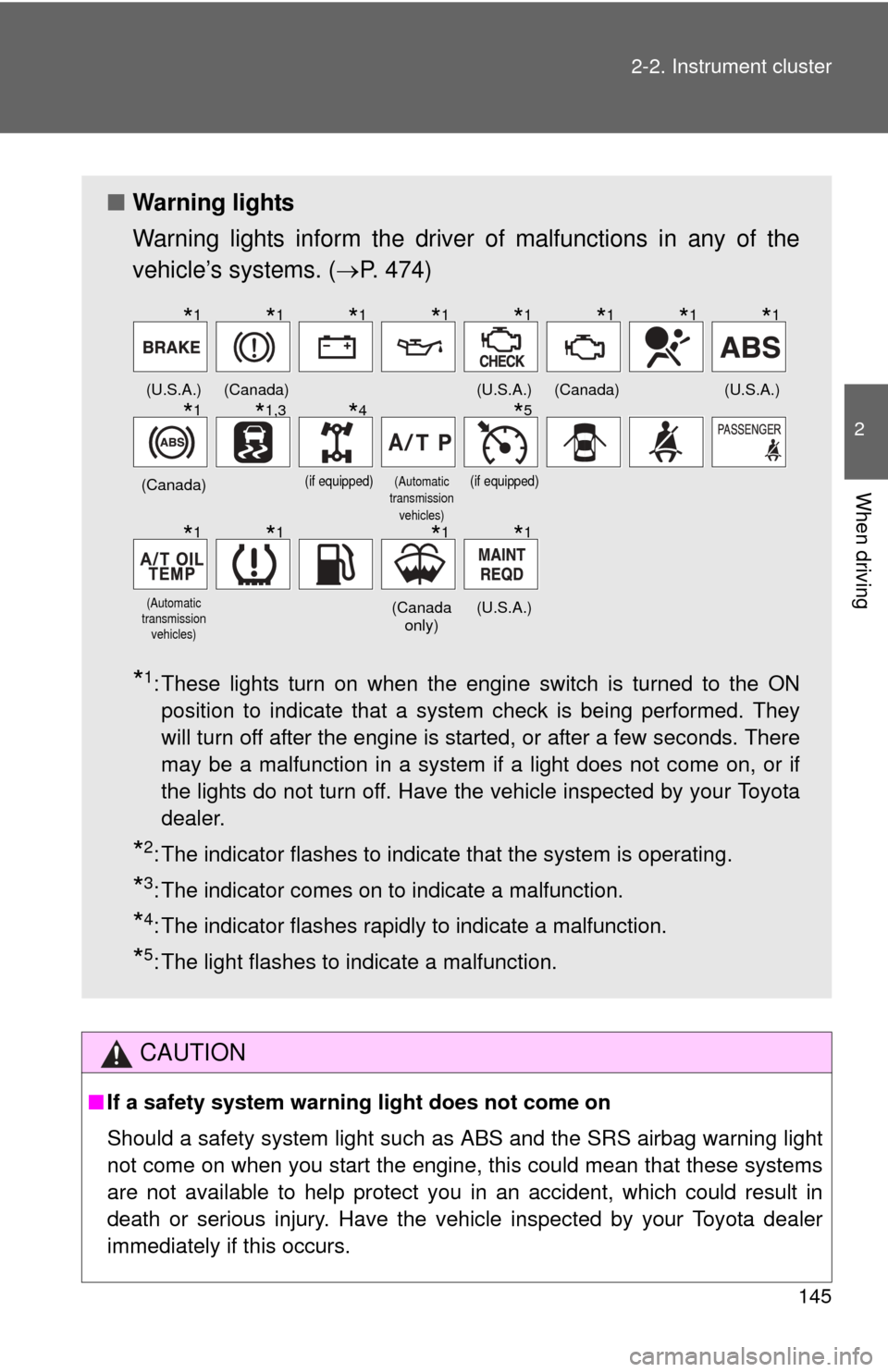
145
2-2. Instrument cluster
2
When driving
CAUTION
■
If a safety system warning light does not come on
Should a safety system light such as ABS and the SRS airbag warning light
not come on when you start the engine, this could mean that these systems
are not available to help protect you in an accident, which could result in
death or serious injury. Have the vehicle inspected by your Toyota dealer
immediately if this occurs.
■ Warning lights
Warning lights inform the driver of malfunctions in any of the
vehicle’s systems. ( P. 474)
*1: These lights turn on when the engine switch is turned to the ON
position to indicate that a system check is being performed. They
will turn off after the engine is started, or after a few seconds. There
may be a malfunction in a system if a light does not come on, or if
the lights do not turn off. Have the vehicle inspected by your Toyota
dealer.
*2: The indicator flashes to indicate that the system is operating.
*3: The indicator comes on to indicate a malfunction.
*4: The indicator flashes rapidly to indicate a malfunction.
*5: The light flashes to indicate a malfunction.
(U.S.A.)(Canada)(U.S.A.)(Canada)(U.S.A.)
(Canada)(if equipped)(Automatic
transmission vehicles)(if equipped)
(Automatic
transmission vehicles)(Canada only)(U.S.A.)
*1*1*1*1*1*1*1*1
*1*1,3*4*5
*1*1*1*1
Page 146 of 572
146
2-2. Instrument cluster
Accessor y meter
: If equipped
Compass
Displays the direction that the vehicle is heading. (P. 387)
Outside temperature
Displays the outside air temperature. (P. 364)
Clinometer
Displays the longitudinal and lateral inclination of the vehicle.
SET button
This button is used to calibrate the compass. ( P. 388)
E/M button
Outside temperature mode:
Switch between English/U.S. Customary System and metric units of the
outside air temperature display by pressing this button quickly.
(P. 364)
Compass mode:
Select the zone number by pressing this button. ( P. 388)
Page 147 of 572
147
2-2. Instrument cluster
2
When driving
CAUTION
■
Caution while driving
Do not adjust the display.
Doing so may cause the driver to mishandle the vehicle and cause an acci-
dent, resulting in death or serious injury.
Page 148 of 572
148
2-3. Operating the lights and wipers
Headlight switch
The headlights can be operated manually.
Ty p e AThe daytime running
lights turn on.
The side marker, park-
ing, tail, license plate,
outside rear view mir-
ror illumination (if
equipped), daytime
running lights and
instrument panel lights
turn on.
The headlights and all
lights listed above
(except daytime run-
ning lights) turn on.
The daytime running
lights turn off.
Page 149 of 572
149
2-3. Operating the lights and wipers
2
When driving
Turning on the high beam headlights
With the headlights on, push
the lever forward to turn on the
high beams.
Pull the lever back to the center
position to turn the high beams
off.
Pull the lever toward you to
turn on the high beams.
Release the lever to turn them off.
You can flash the high beams
with the headlights on or off.
Ty p e B The daytime running
lights turn on.
The side marker, park-
ing, tail, license plate,
outside rear view mir-
ror illumination (if
equipped), daytime
running lights and
instrument panel lights
turn on.
The headlights and all
lights listed above
(except daytime run-
ning lights) turn on.
Page 150 of 572
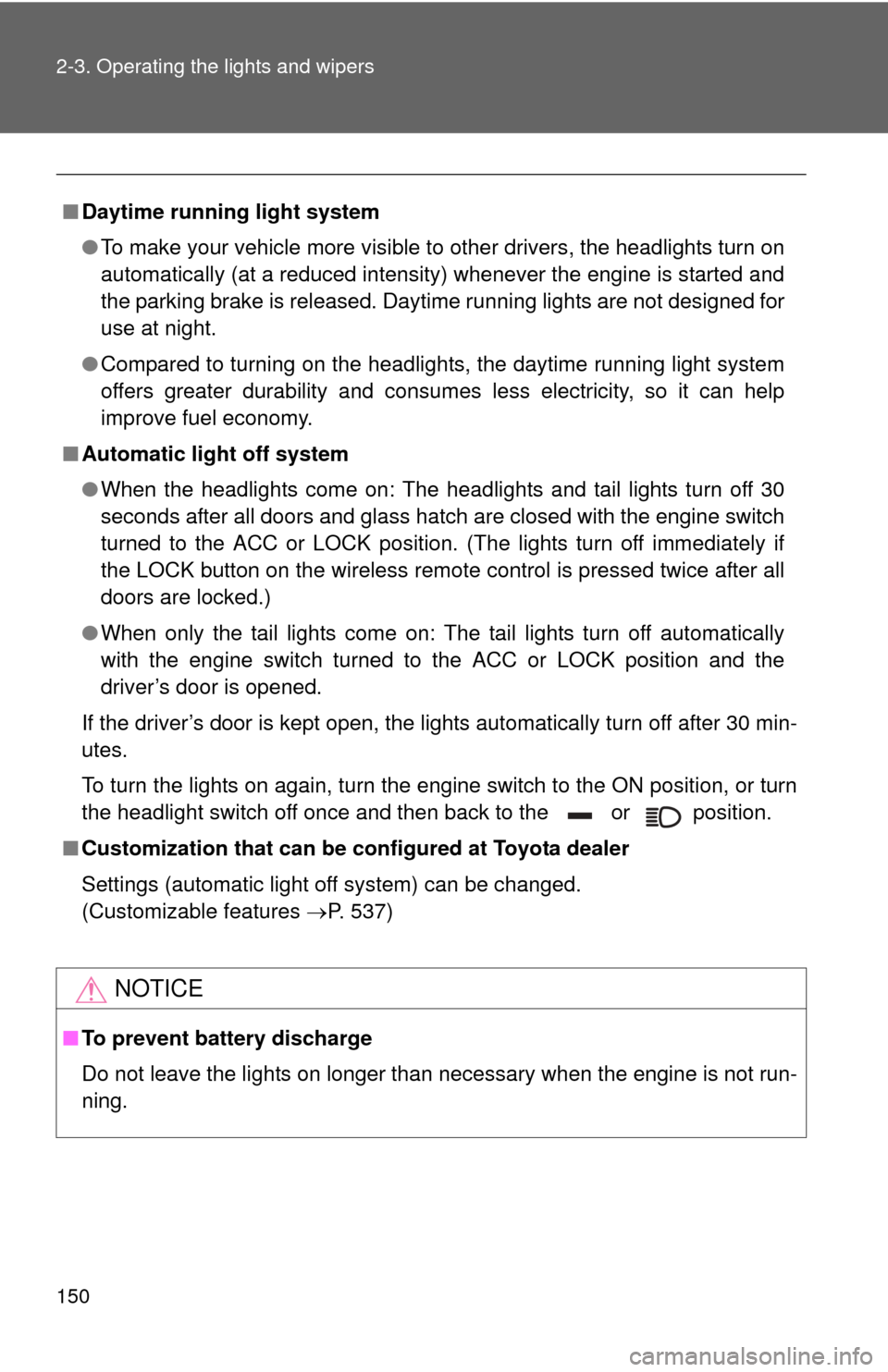
150 2-3. Operating the lights and wipers
■Daytime running light system
●To make your vehicle more visible to other drivers, the headlights turn on
automatically (at a reduced intensity) whenever the engine is started and
the parking brake is released. Daytime running lights are not designed for
use at night.
● Compared to turning on the headlights, the daytime running light system
offers greater durability and consumes less electricity, so it can help
improve fuel economy.
■ Automatic light off system
●When the headlights come on: The headlights and tail lights turn off 30
seconds after all doors and glass hatch are closed with the engine switch
turned to the ACC or LOCK position. (The lights turn off immediately if
the LOCK button on the wireless remote control is pressed twice after all
doors are locked.)
● When only the tail lights come on: The tail lights turn off automatically
with the engine switch turned to the ACC or LOCK position and the
driver’s door is opened.
If the driver’s door is kept open, the lights automatically turn off after 30 min-
utes.
To turn the lights on again, turn the engine switch to the ON position, or turn
the headlight switch off once and then back to the or position.
■ Customization that can be co nfigured at Toyota dealer
Settings (automatic light off system) can be changed.
(Customizable features P. 537)
NOTICE
■To prevent battery discharge
Do not leave the lights on longer than necessary when the engine is not run-
ning.
Trending: check engine, cooling, alarm, engine oil, aux port, coolant level, tires
